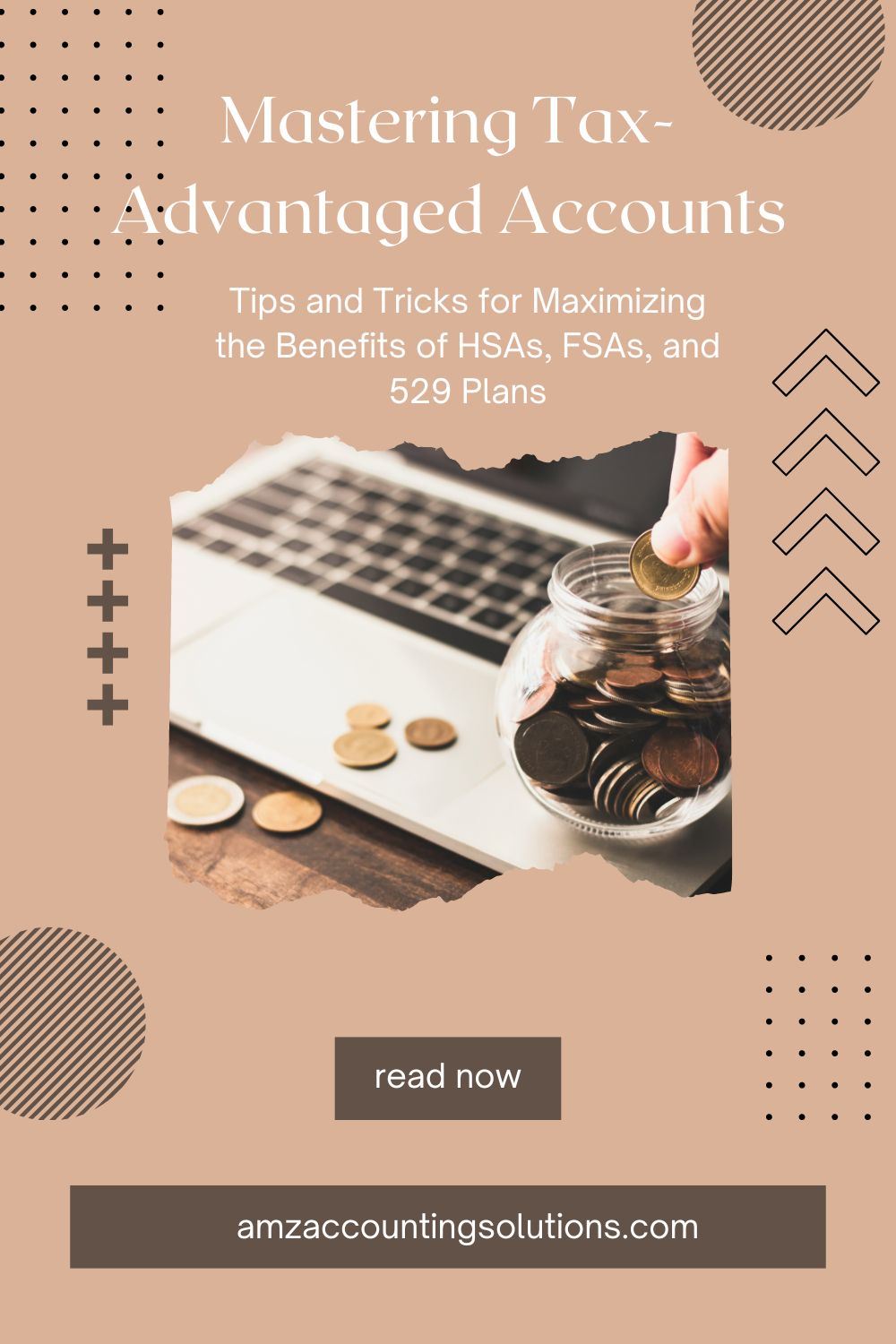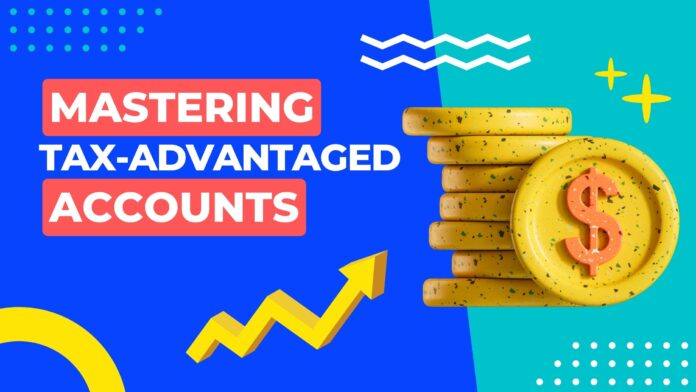Tax-advantaged accounts are a powerful tool for saving money on healthcare and education expenses, while also reducing your tax liability. These accounts, which include Health Savings Accounts (HSAs), Flexible Spending Accounts (FSAs), and 529 College Savings Plans, offer unique tax benefits when used for qualified expenses. In this blog post, we’ll explore tips and tricks for mastering tax-advantaged accounts to help you maximize the benefits of HSAs, FSAs, and 529 plans.
Health Savings Accounts (HSAs)
HSAs are tax-advantaged accounts specifically designed for individuals with high-deductible health plans (HDHPs). To be eligible, you must be enrolled in an HDHP and not covered by any other disqualifying health insurance. HSAs offer several tax benefits, including tax-deductible contributions, tax-free growth, and tax-free withdrawals for qualified medical expenses. Contribution limits for HSAs change yearly, so it’s essential to stay up-to-date on the latest information.
Tips for Maximizing HSA Benefits
To fully leverage the benefits of an HSA, start by making proactive plans to contribute regularly. By contributing consistently, you’ll build up a substantial balance that can help cover medical expenses now or in the future. HSAs also offer a triple-tax advantage: contributions are tax-deductible, funds grow tax-free, and withdrawals for qualified medical expenses are tax-free. To maximize these benefits, consider investing your HSA funds in a diverse portfolio to grow your balance over time.
Flexible Spending Accounts (FSAs)
FSAs are employer-sponsored tax-advantaged accounts used to pay for qualified medical and dependent care expenses. Unlike HSAs, FSAs do not have specific eligibility requirements; however, contribution limits apply. The main tax benefit of an FSA is the ability to make pre-tax contributions, which lowers your taxable income.
Tips for Maximizing FSA Benefits
When using an FSA, it’s crucial to estimate your annual expenses carefully. Overfunding the account can lead to forfeited funds at the end of the plan year, while underfunding may result in unexpected out-of-pocket costs. Keep in mind that most FSAs have a “use it or lose it” policy, meaning any unused funds at the end of the plan year are forfeited. To avoid this, plan and track your expenses throughout the year and adjust your contributions accordingly.
529 College Savings Plans
A 529 plan is a state-sponsored tax-advantaged account designed to help families save for college and other qualified education expenses. There are no income or age restrictions for 529 plans, and contribution limits are generally quite high. The main tax benefit of a 529 plan is that earnings grow tax-free, and qualified withdrawals are not subject to federal income tax.
Tips for Maximizing 529 Plan Benefits
To make the most of a 529 plan, start contributing early and consistently. This allows you to take advantage of compound interest, which can significantly increase your balance over time. Additionally, consider the investment options available within the plan. Choose a diversified portfolio based on your child’s age and your risk tolerance to maximize growth potential.
Comparing HSAs, FSAs, and 529 Plans
While all three tax-advantaged accounts offer unique benefits, it’s essential to choose the right account(s) based on your individual circumstances. HSAs are best suited for individuals with HDHPs, while FSAs are appropriate for those with employer-sponsored health plans. 529 plans, on the other hand, are ideal for families saving for education expenses.
General Tips for Mastering Tax-Advantaged Accounts
Proper record-keeping and documentation are essential for all tax-advantaged accounts to ensure you’re meeting IRS requirements and maximizing tax benefits. Keep track of your contributions, withdrawals, and any relevant receipts or invoices. Additionally, review your accounts regularly to ensure they align with your financial goals and make adjustments as needed.
Tax Law Updates and Changes
Staying informed about tax law changes and updates is critical for maximizing the benefits of your tax-advantaged accounts. Changes in contribution limits, eligible expenses, or tax deductions can impact your strategy. Some resources to stay up-to-date on tax laws and regulations include IRS publications, financial news outlets, and blogs focused on personal finance.
Working with Financial Professionals
Consulting with financial professionals can be beneficial in optimizing the use of tax-advantaged accounts. Financial advisors and tax professionals can provide personalized guidance based on your specific financial situation and goals. When selecting a financial professional, look for someone with relevant expertise, a solid reputation, and a fee structure that aligns with your budget.
Mastering tax-advantaged accounts is a key component of achieving financial success. By leveraging the tips and tricks provided in this blog post, you can maximize the benefits of HSAs, FSAs, and 529 plans to reduce your tax liability and save for essential healthcare and education expenses. Don’t hesitate to seek professional guidance when needed and stay informed about tax laws and regulations to make the most of these powerful financial tools.










